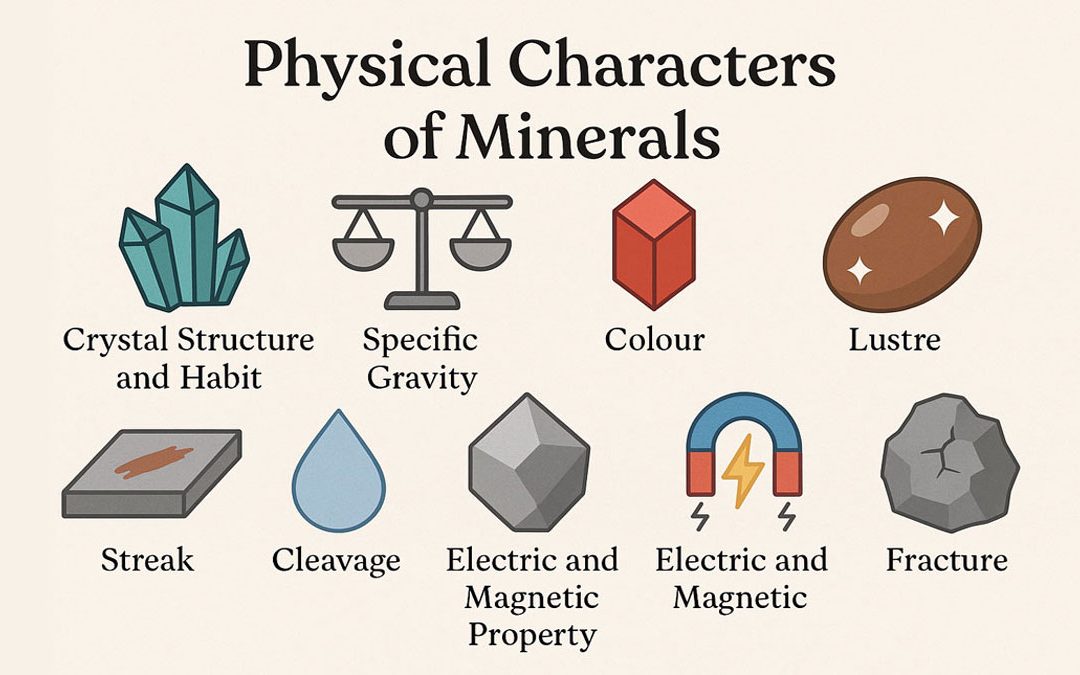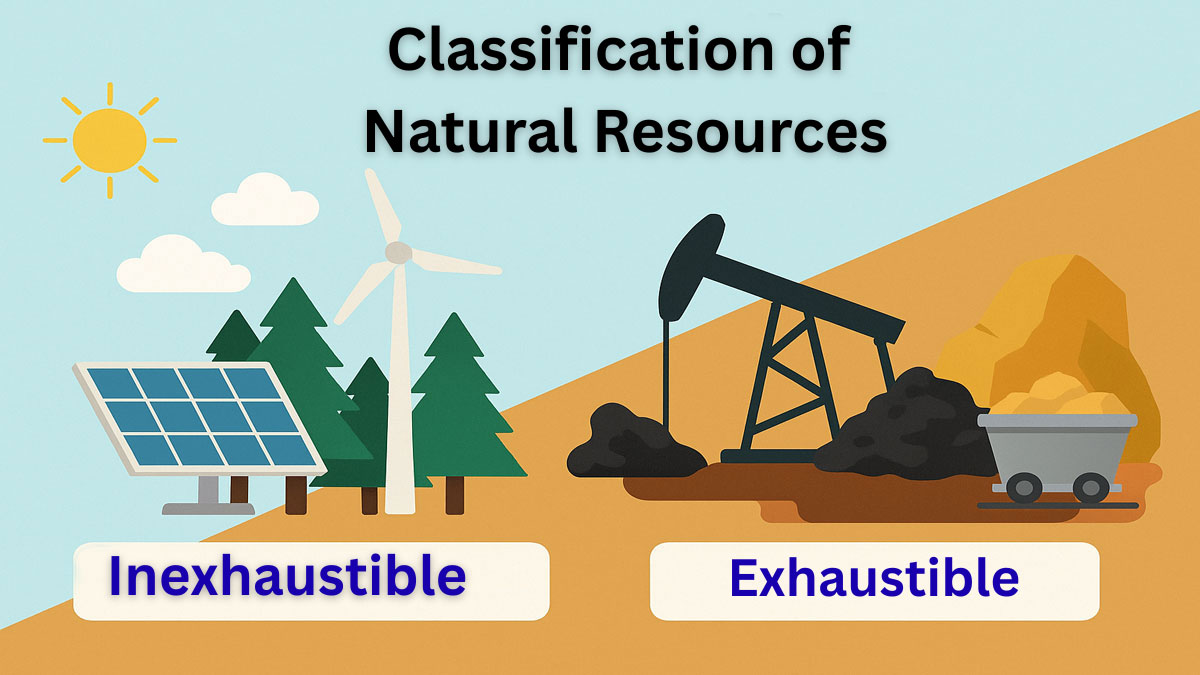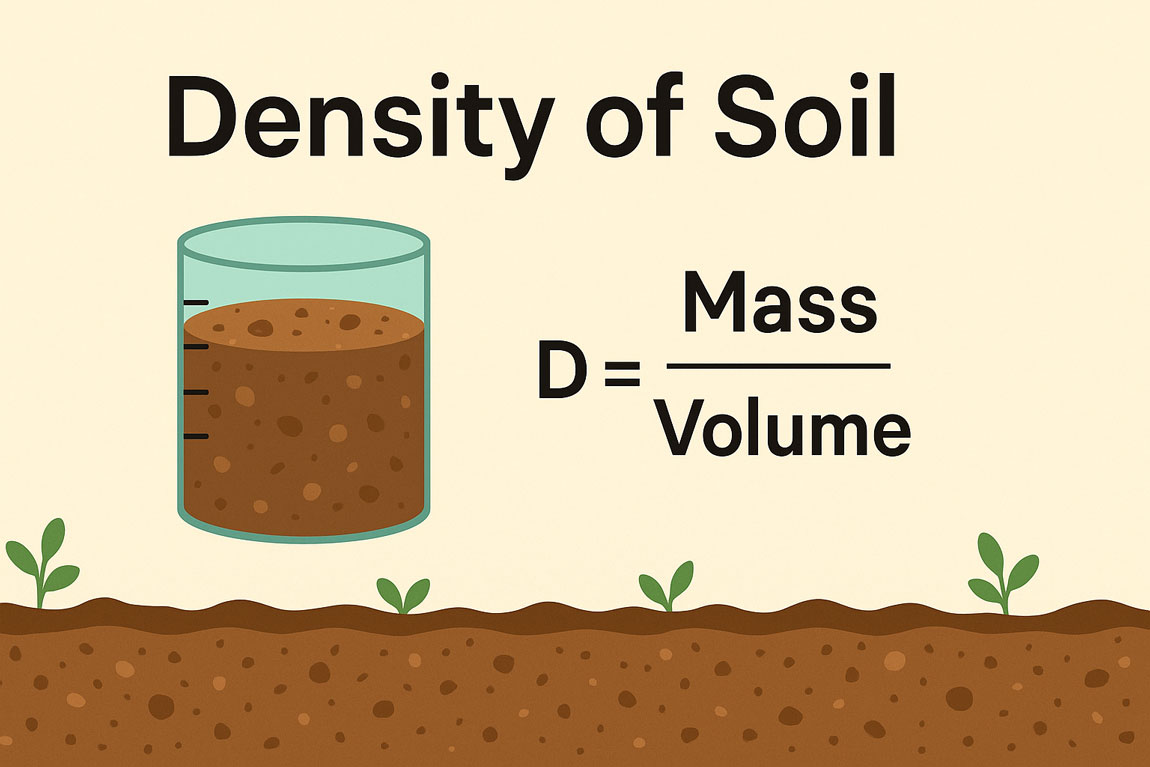The physical characteristics of minerals are essential traits used to identify and classify them accurately. These characters offer insights into a mineral’s behavior, structure, and properties under various conditions. Below is a detailed breakdown of the important physical characteristics of minerals used in geological studies and practical identification.
Key Physical characteristics of minerals:
All minerals are recognized by their physical characteristics, which are broadly divided into the following categories:
Crystal structure and habit:
When a mineral exhibits a good crystal habit or form, it helps to identify the mineral. It may also be granular with very fine crystals, which are visible only under the microscope.
Specific gravity:
The specific gravity of a mineral is a significant characteristic for its identification. It is expressed as the ratio of the weight of the mineral to the weight of an equal volume of water at 4°C. The specific gravity of a mineral can be determined in the laboratory. It can also be readily known by referring to the standard table of a mineralogy book (Dana and Ford 1948). The specific gravity of quartz is 2.65, and that of calcite is 2.71.
Colour:
It indicates the appearance of the minerals in reflected light or transmitted light for translucent minerals. Many minerals show different types of body colours. Quartz, for instance, is commonly white in colour, but it may also be grey, yellow, or red. Iridescence is the play of colours due to surface or internal interference. Labradorite (a feldspar of plagioclase group) exhibits internal iridescence, whereas sphalerite often shows the surface effect.
Streak:
It refers to the colour of the mineral powder, which is different from the body colour. It is the colour produced when a mineral is rubbed against unglazed porcelain. Magnetite is steel grey but its streak is cherry red. This property is generally observed in minerals with non-metallic lustre.
Lustre:
It indicates the way a mineral’s surface interacts with light. Based on lustre, minerals are broadly classified into metallic and non-metallic. The latter can be further classified into pearly, silky, silvery, dull, and so on. The soft minerals, calcite and serpentine, exhibit pearly and silky lustre, respectively.
Odour, feel, and taste:
Some minerals have typical tastes such as bitter, sour, alkaline, or saline. For example, common salt has a saline taste. Under certain circumstances, some minerals exhibit odours such as sulphureous, bituminous, or argillaceous.
For example, friction or heat on pyrite generates a sulphureous odour. Serpentine and allied minerals, when moistened, give an argillaceous odour. A mineral may have a characteristic feel such as soapy, greasy, or harsh. Talc is well known for its soapy feel.
Fusibility and malleability:
A mineral is called fusible if it melts on the application of heat, and malleable (e.g., gold) if it is flattened when it is mildly hammered.
Electric property:
A mineral develops electricity by friction. Most of the gems are positively electric in the polished state. When a crystallized body develops an electric charge under pressure, it is called piezoelectricity.
Some crystals show positive and negative charges of electricity in different parts with a change of temperature. For example, on heating, quartz shows positive electricity at the three alternative prismatic faces and negative electricity in the remaining three edges.
Magnetic property:
Magnetite exhibits characteristics similar to natural magnet. The magnetic polarity is presumably developed in it by induction from the Earth’s magnetic. Some minerals are attracted when brought close to a powerful magnet, for example, hematite, pyrrhotite, and native platinum.
Cleavage:
It is the easily breakable plane along which the atoms are closely packed. When the mineral is subjected to a blow, it breaks along this plane, leaving a smooth surface. The cleavage is termed basal, prismatic, pyramidal, and so on, depending upon its parallelism with the crystal face. In topaz, cleavage is developed parallel to the basal face, and so it is termed basal cleavage. Similarly, it is prismatic in amphibole and pyramidal in fluorite.
Fracture:
A fracture is developed in a mineral by a sharp blow with a hard object. The resultant surface is characteristic of the mineral and may be of different types, such as conchoidal, jagged, fibrous, or irregular. Thus, quartz develops a conchoidal fracture that appears like a concave surface. The hardness of a mineral is measured on the Mohs scale.
Brittle nature:
A mineral is brittle when it forms fragments or powder (e.g., quartz, calcite). It is flexible if it bends without fracturing and returns to its normal shape after the removal of the force (e.g., some varieties of talc).
Elasticity:
The elastic property of some minerals is derived from their capacity to resist any change in shape or volume when subjected to force. Muscovite is elastic, whereas phlogopite is inelastic.
Fluorescence and tenacity:
Fluorescence is the response to ultraviolet light, and tenacity is the response to mechanically induced changes of shape or form. The acid reaction is seen in some minerals such as silicate, which produces effervescence with dilute hydrochloric acid.
Conclusion:
The physical characteristics of minerals discussed above are critical in helping geologists identify and understand different mineral types. These characteristics, from specific gravity and colour to elasticity and fluorescence, form the basis of mineralogical classification and practical fieldwork.






